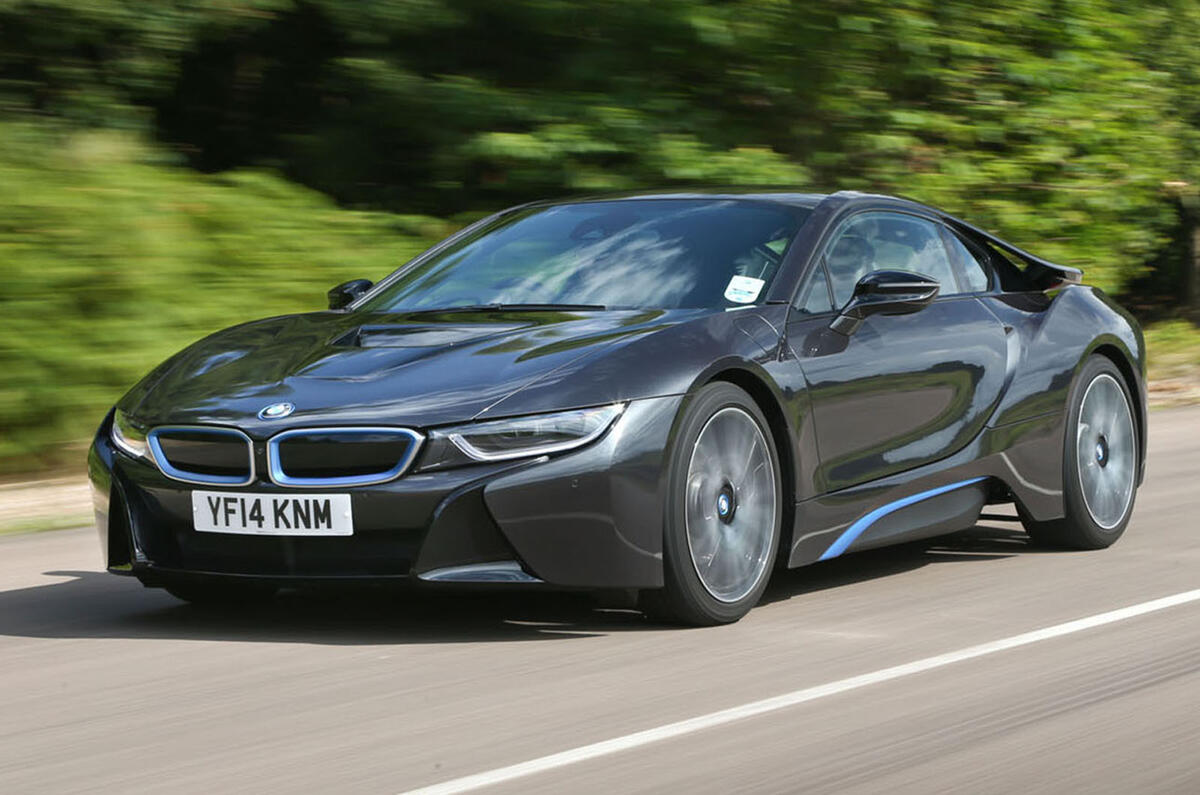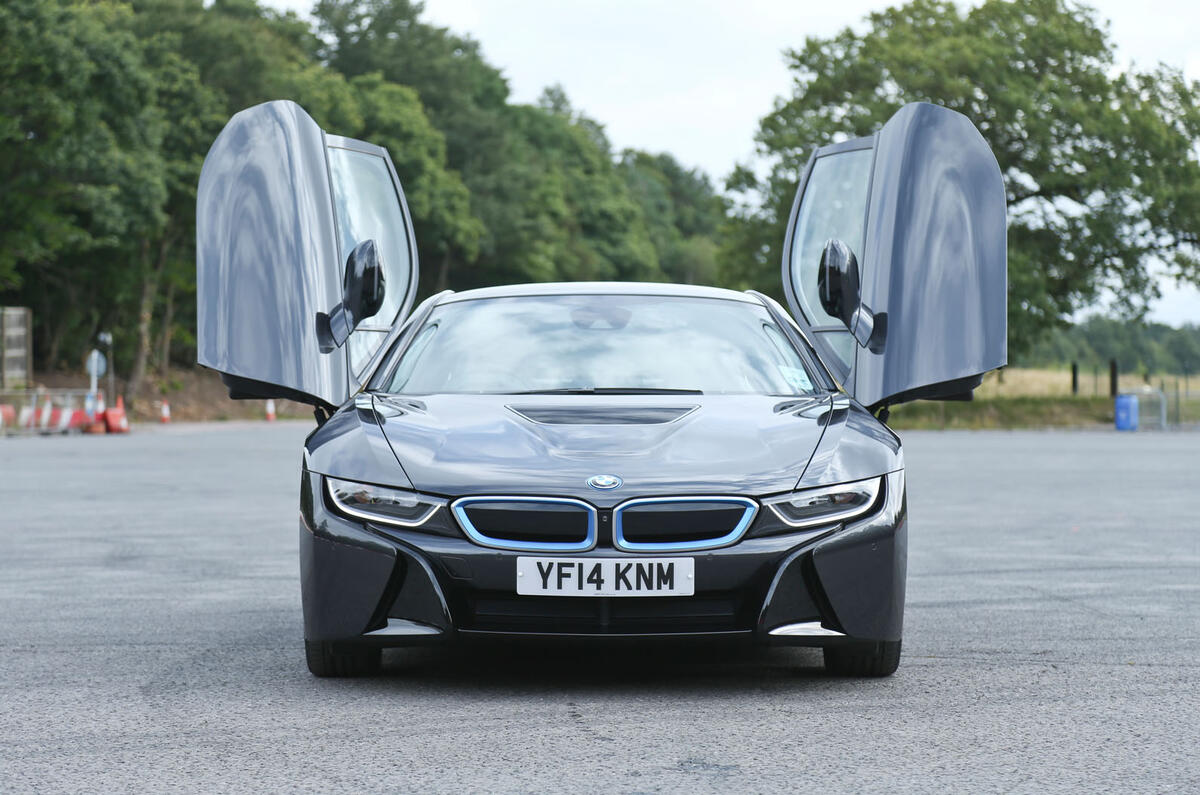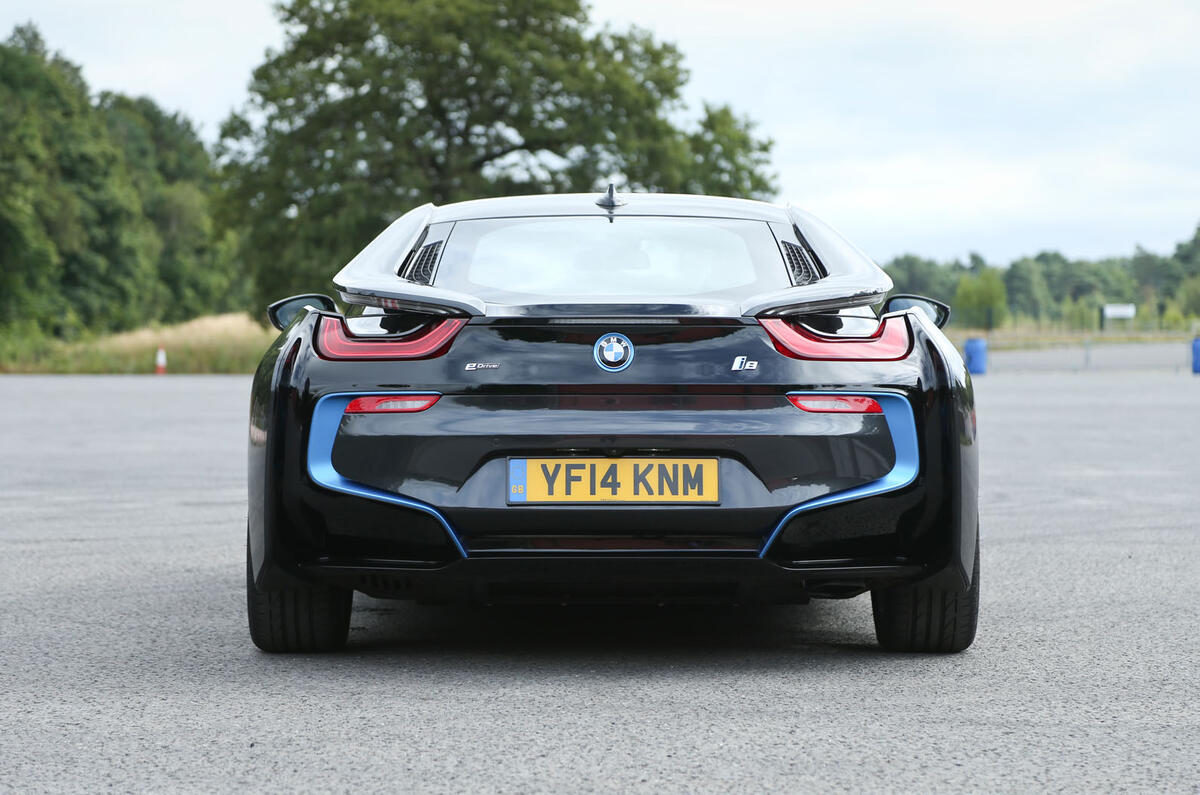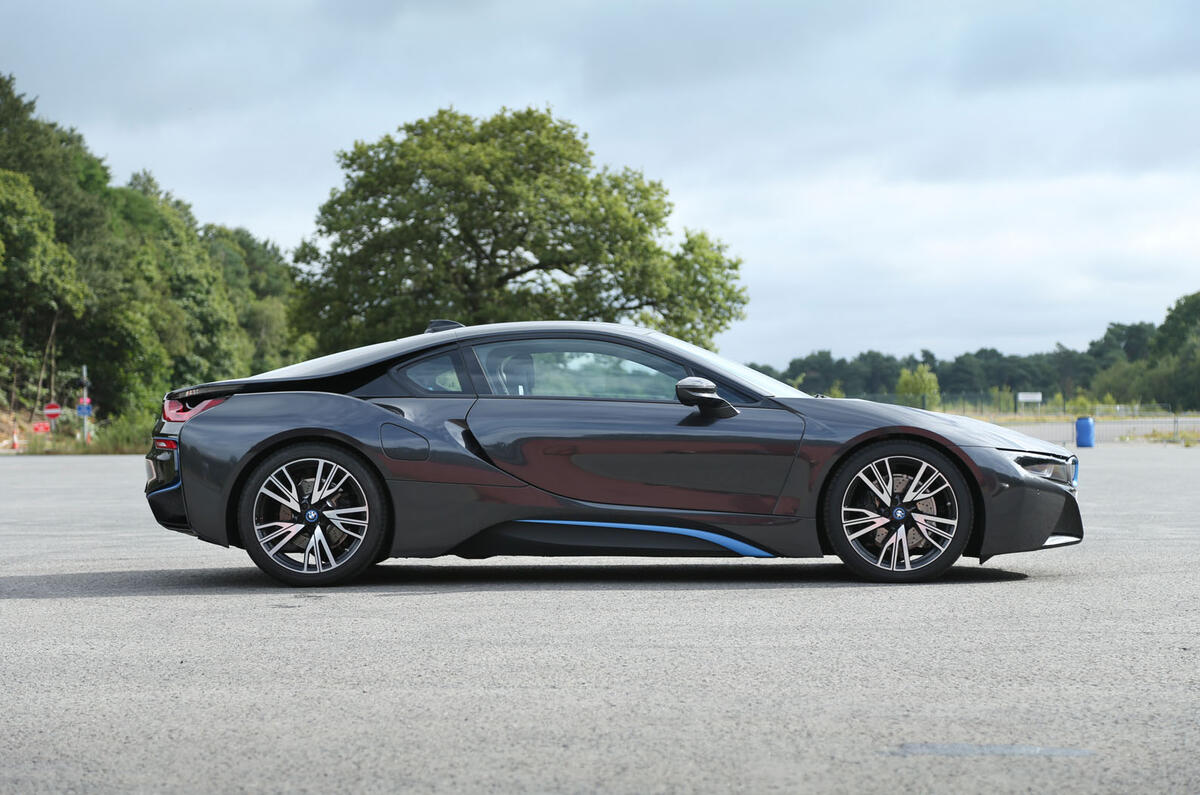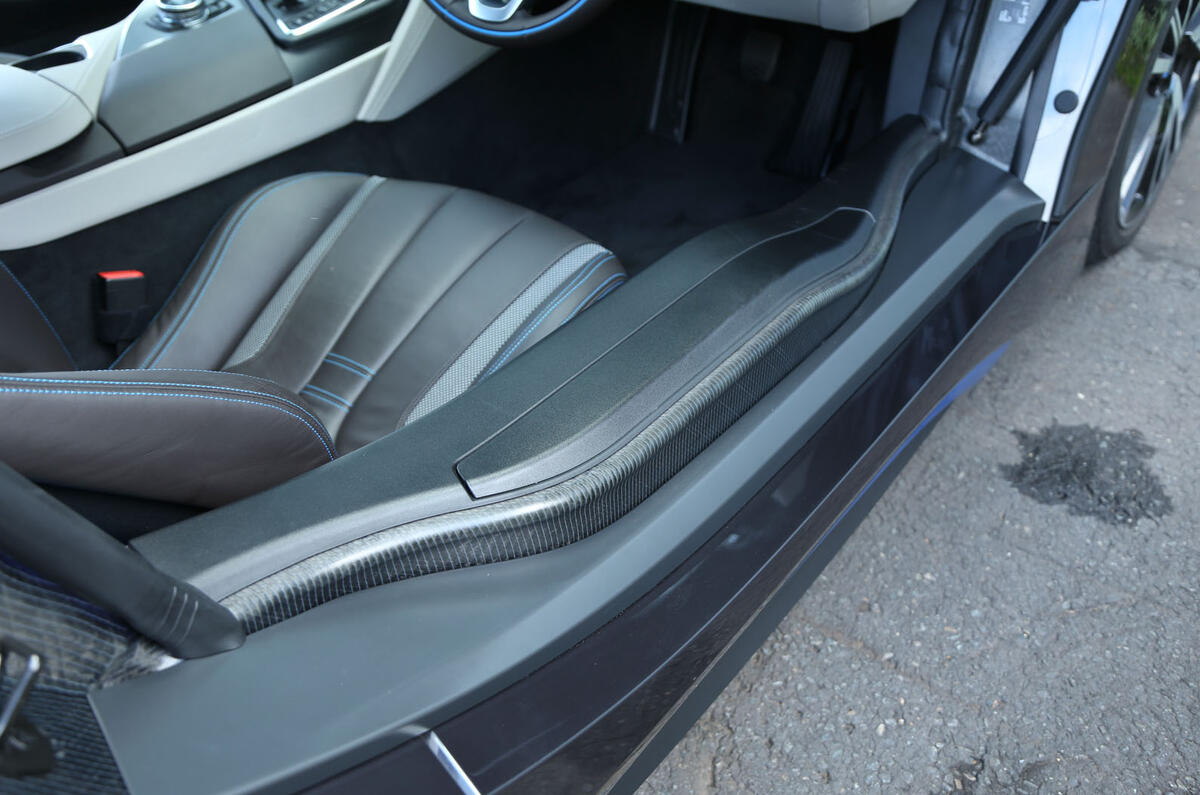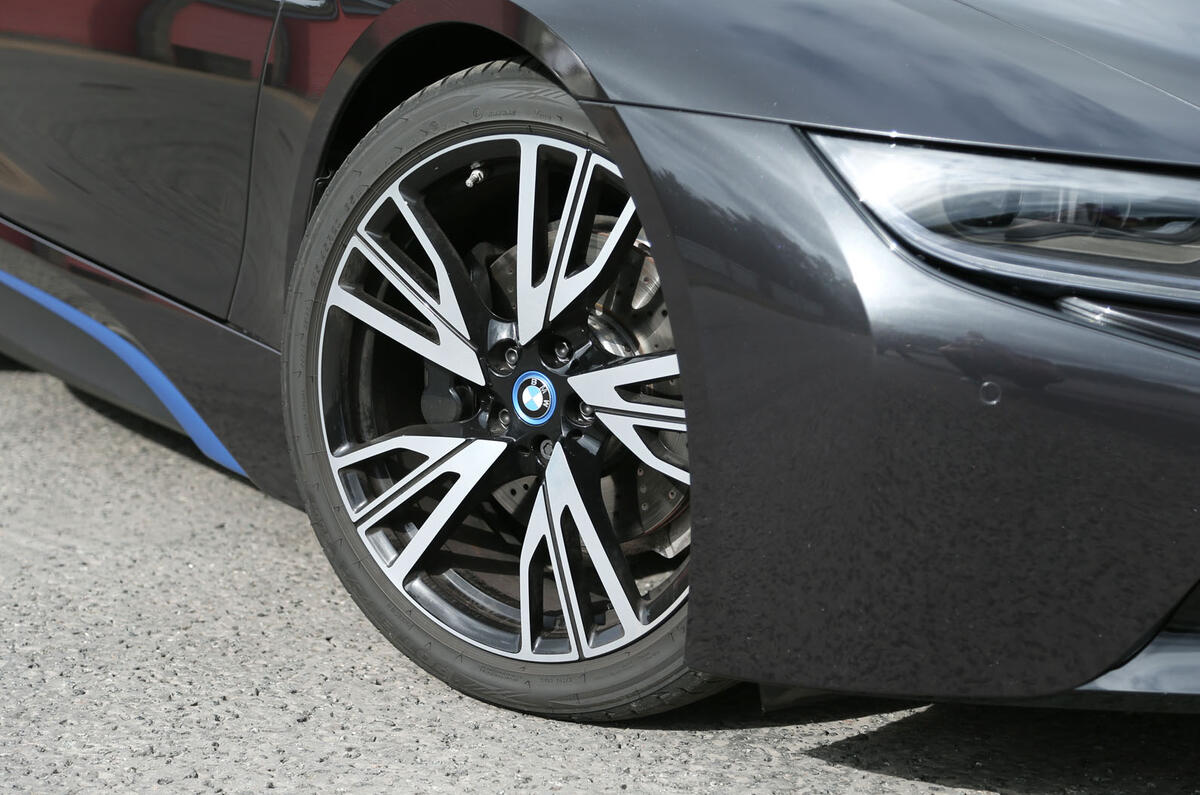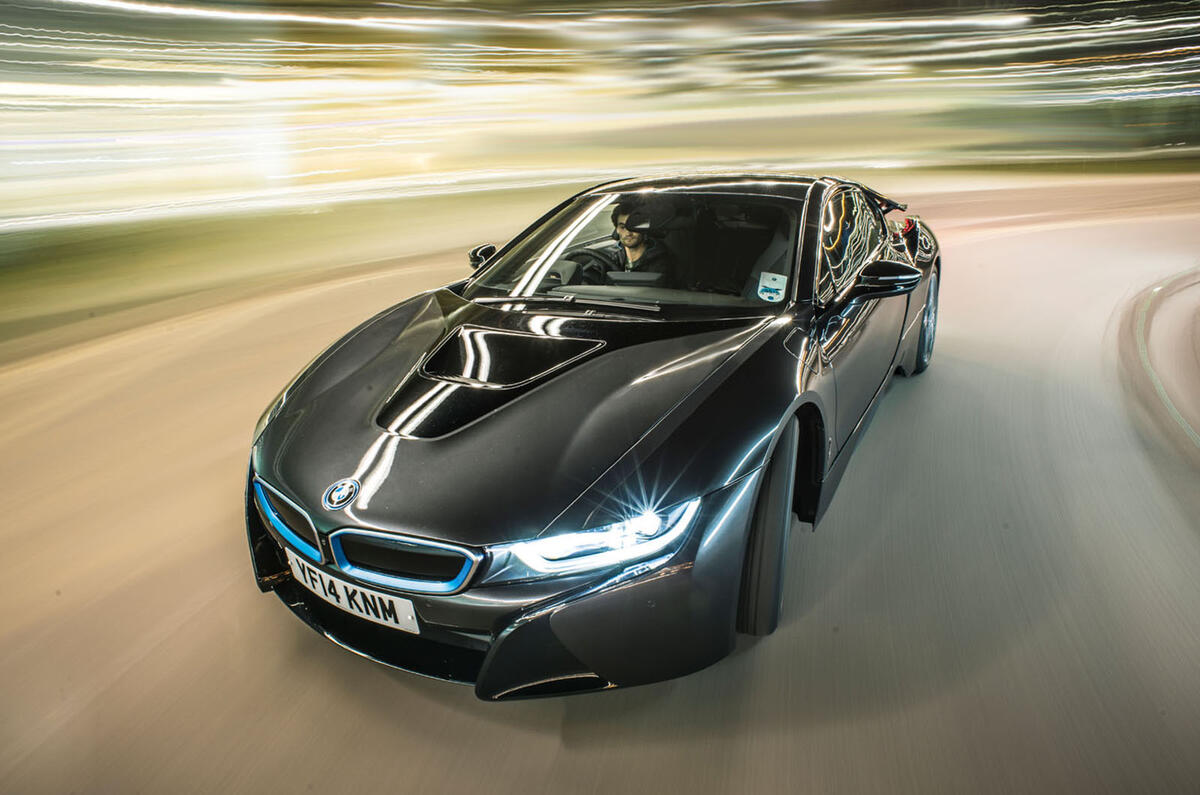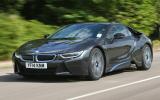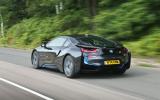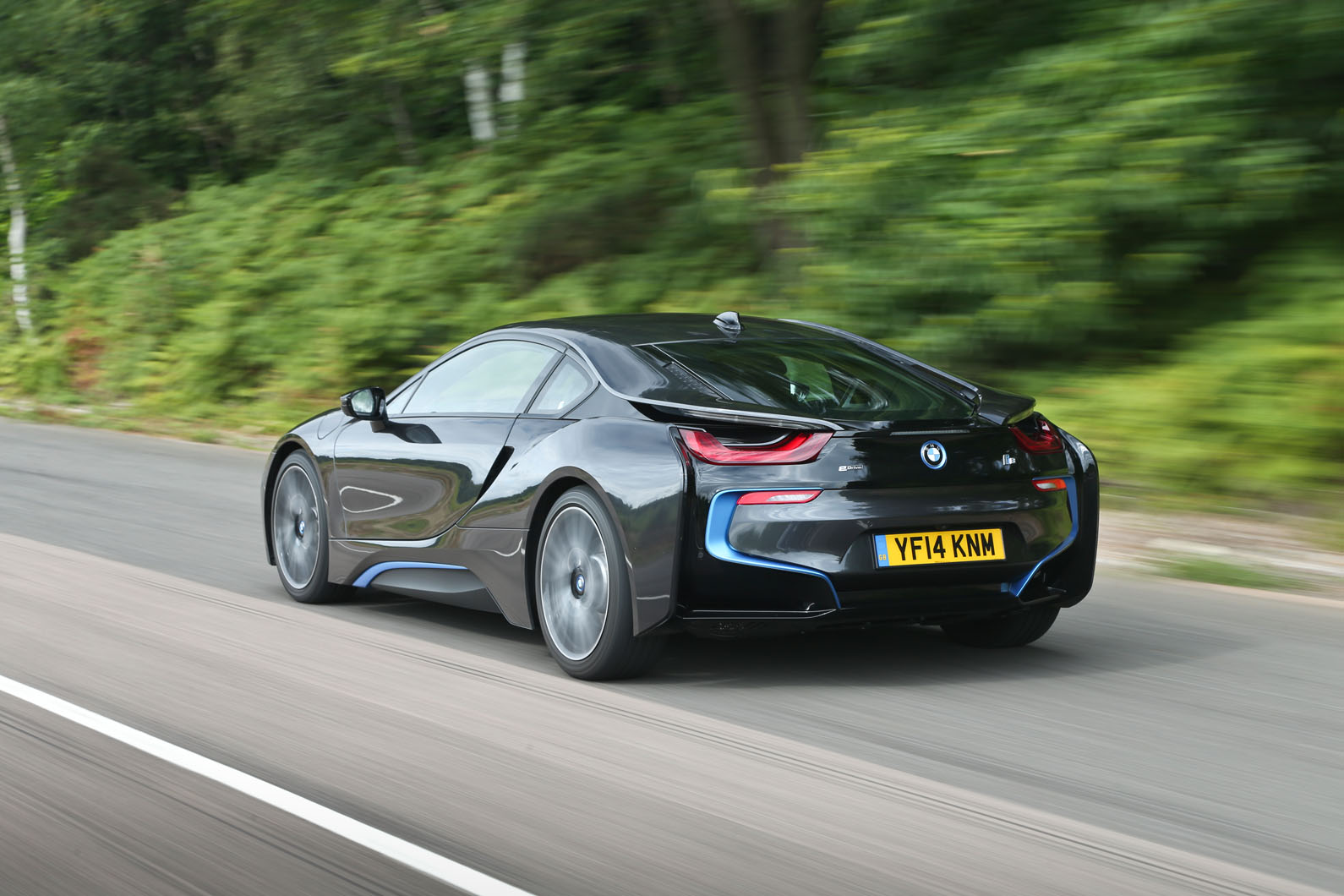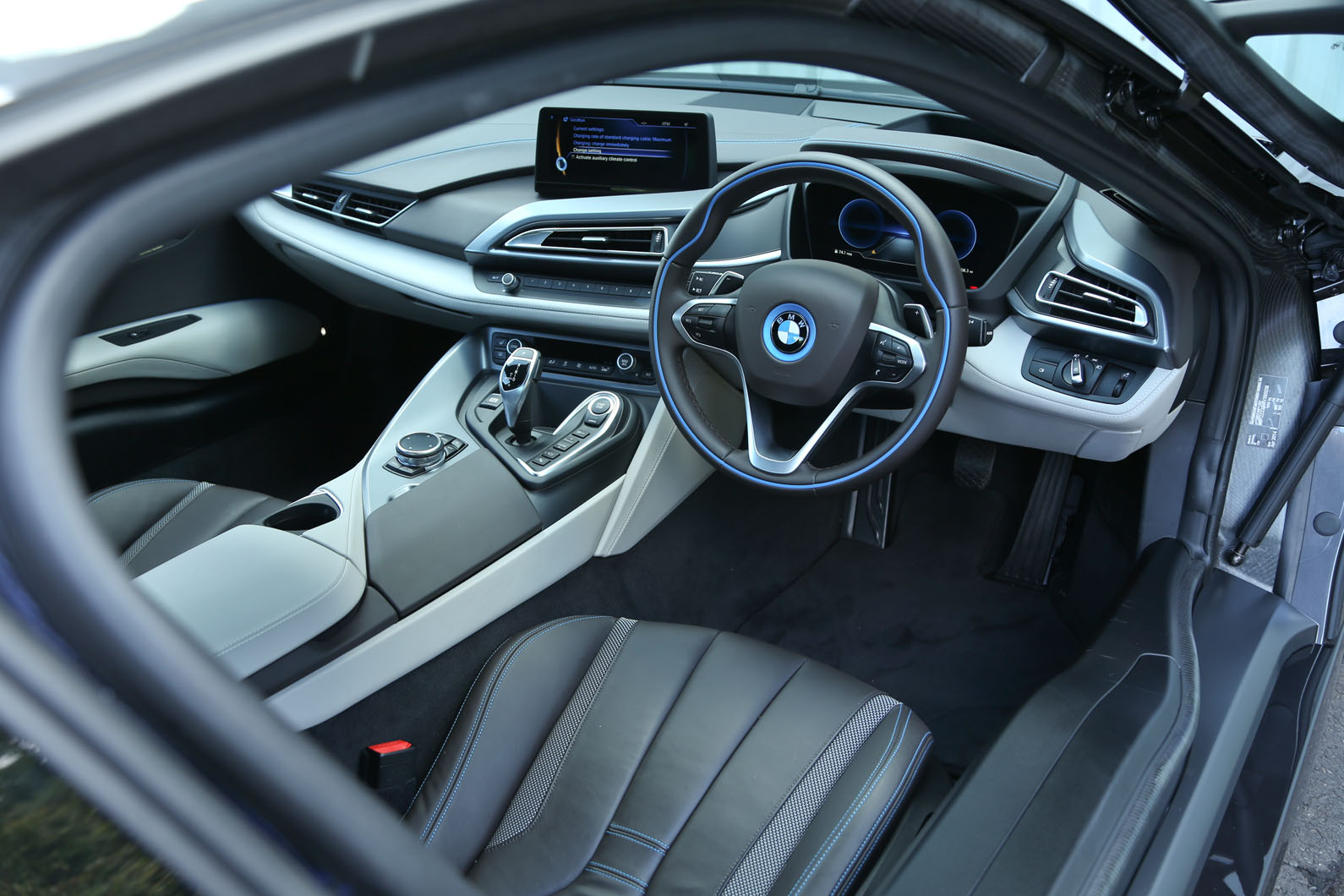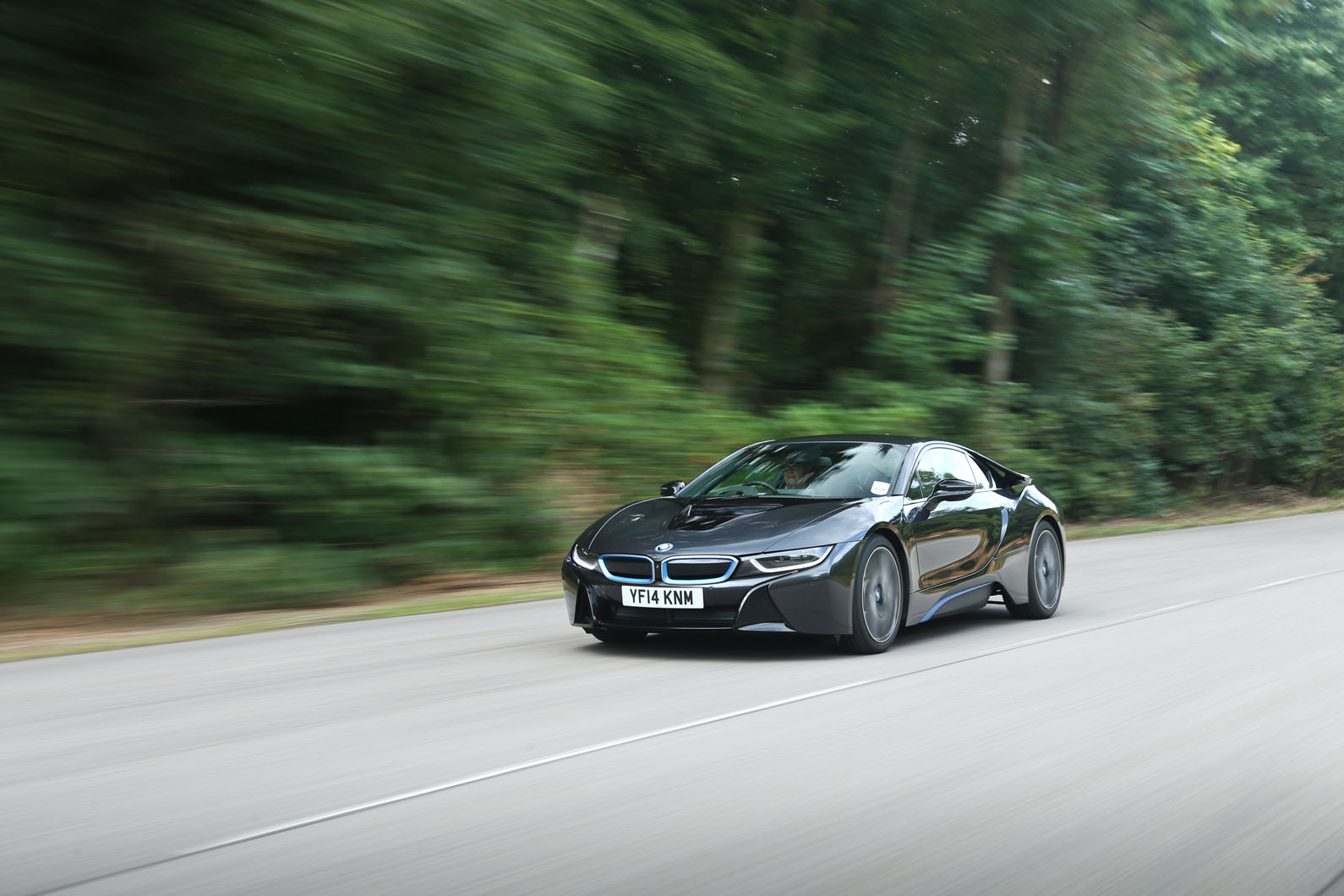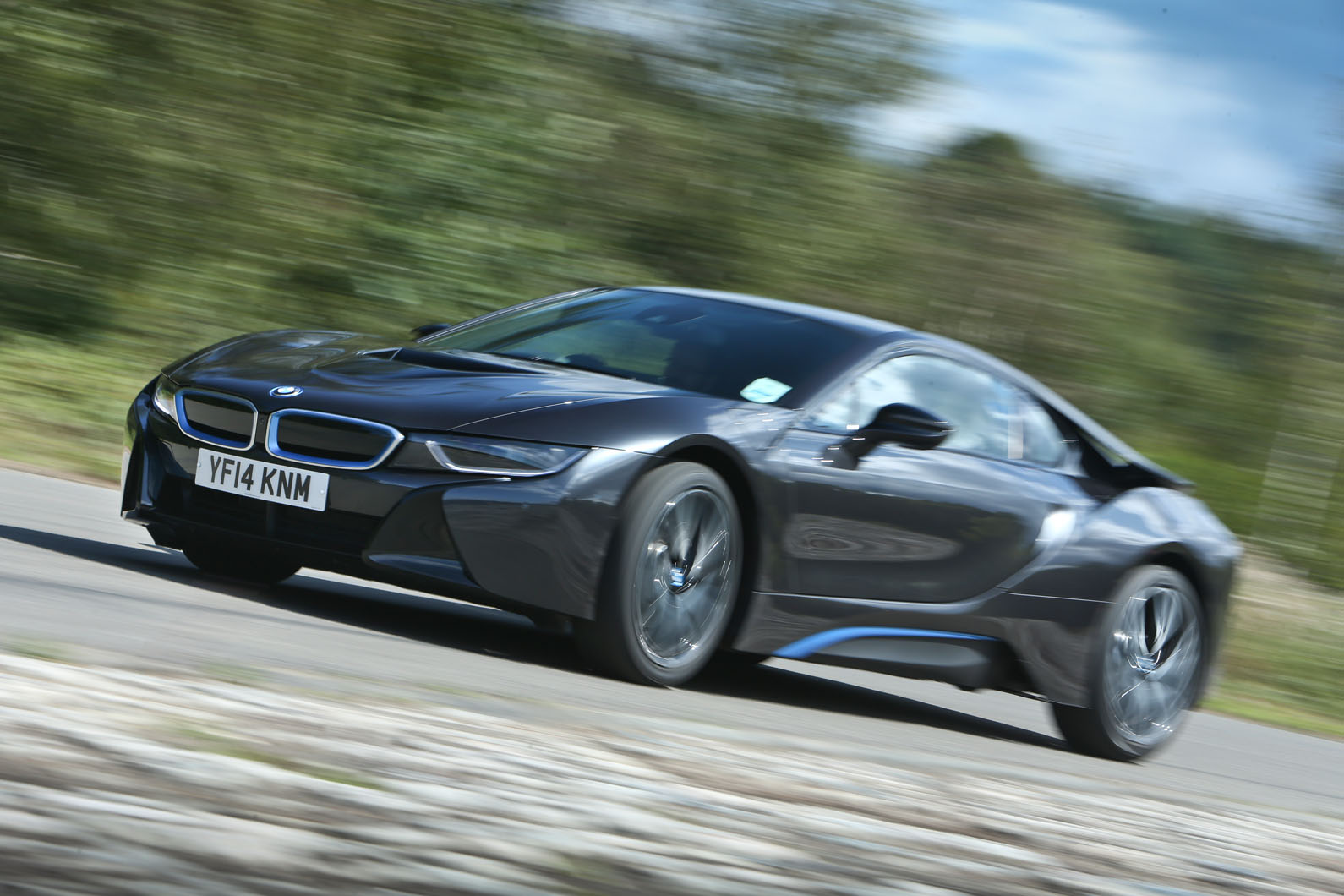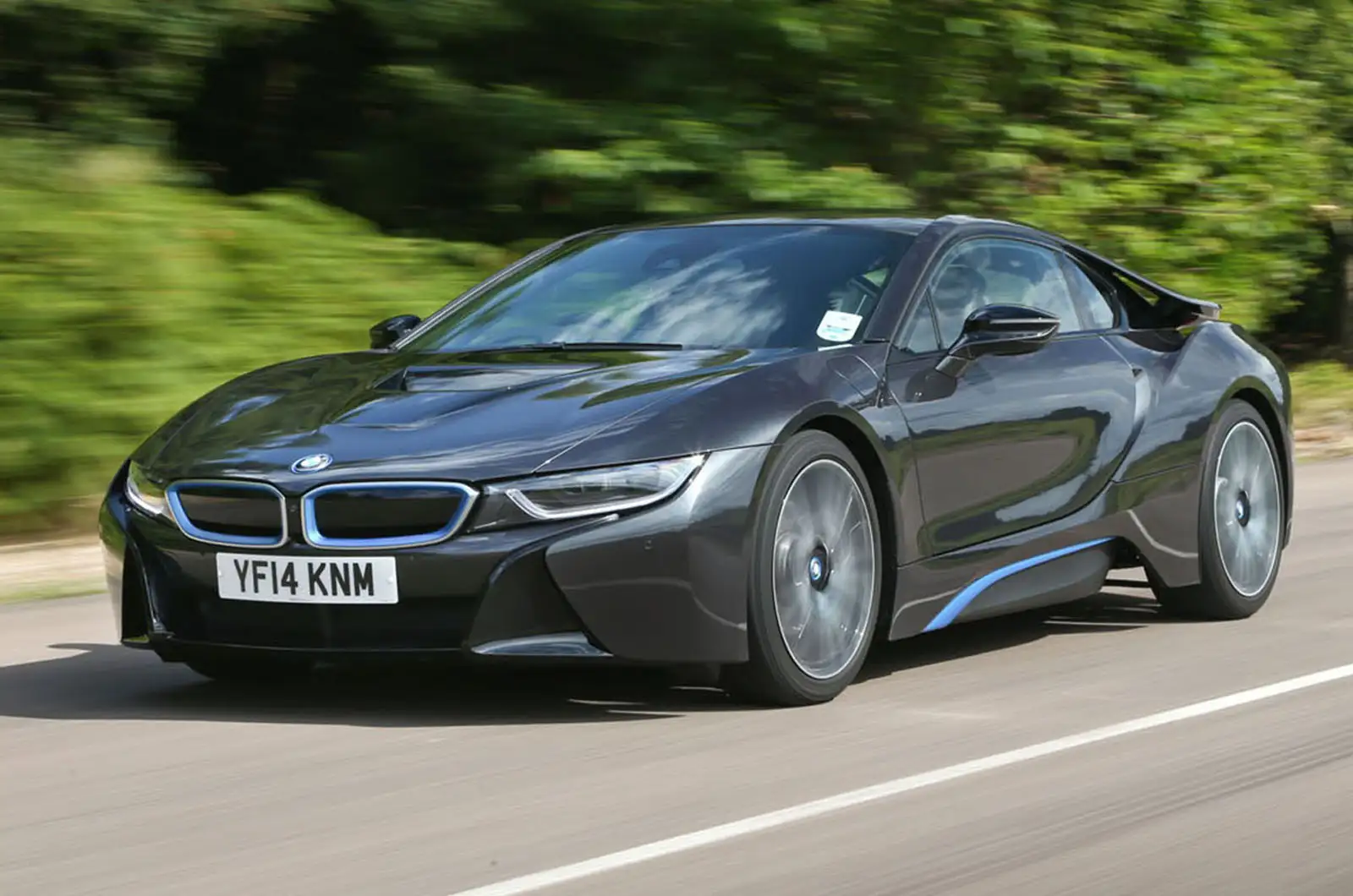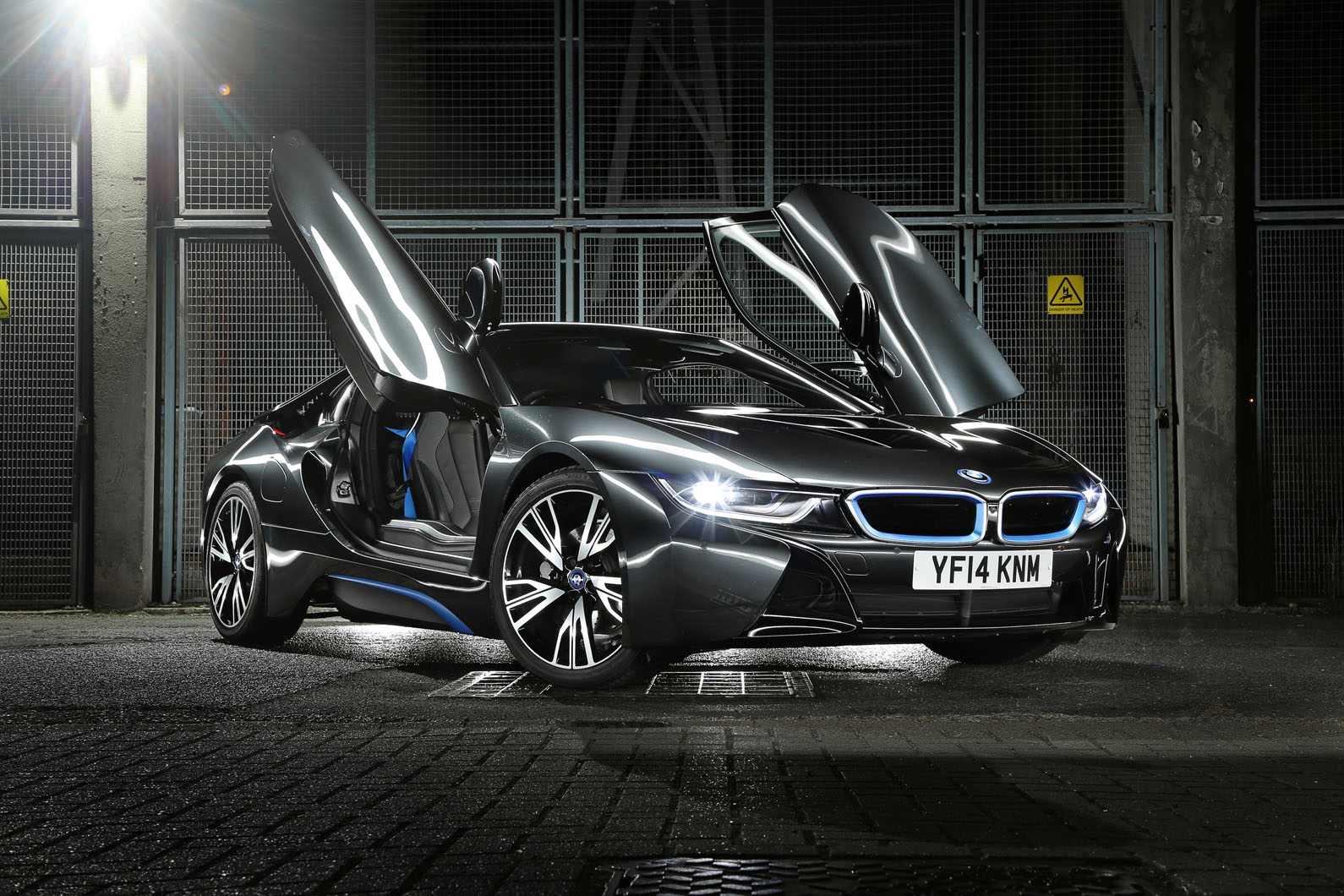The BMW LifeDrive platform is the genius behind the i8. It combines a passenger cell and doors made of resin-injected carbonfibre-reinforced plastic (CFRP) with front and rear subframes and crash structures in aluminium to create a super-lightweight body. The CFRP tub is 50 per cent lighter than if it had been made of steel and 30 per cent lighter than had it been aluminium.
Inside hides the normally punitive mass of a combustion engine, an electric motor and a lithium ion battery pack, but the overall weight is 1560kg as claimed, or 1575kg on our scales – which is quite something. The last Porsche 911 we weighed – a Targa 4S – was also 1575kg, while a V6 Jaguar F-Type tops 1700kg.
Power comes primarily from a reworked version of the 1.5-litre turbocharged petrol triple you’ll find in a Mini Cooper.
Here, though, special internals and new induction technology conjure 228bhp and 236lb ft from that modest swept volume. The engine drives not only the rear wheels via a six-speed automatic transmission but also a high-output starter-generator electric motor, which shuffles power back into the 7.1kWh lithium ion battery under the cabin floor.
Up front, there’s a 129bhp, 184lb ft ‘hybrid synchronous’ electric motor, which drives the front wheels. It is of BMW’s own design and gives a more balanced delivery of torque than a simpler traction motor. It is also ground-breaking because it drives through a multi-speed automatic gearbox.
BMW’s ‘hybrid synchronous’ electric motor is due a big chunk of the credit for the i8’s performance. Munich’s own proprietary tech is ostensibly a permanently excited synchronous motor (the kind used widely in EVs) with an asymmetrical rotor.
This creates what’s known as reluctance torque as it spins, in addition to the normal electromagnetic torque delivered by the alternating current. That extra torque delivers more power at higher rotational speeds than most electric motors can manage and therefore more electric boost for the i8 at higher road speeds.
The motor wouldn’t add so viscerally to the i8’s motorway pace without a second key bit of powertrain technology: a two-speed automatic transmission dedicated to that front-mounted electric motor. This gearbox, which is manufactured by GKN Driveline, is controlled in harmony with the primary engine and gearbox and shifts ratios seamlessly. It allows the electric motor to chime in with all of its 184lb ft at much higher road speeds than would otherwise be possible.
Combined outputs for the i8 are 357bhp and 420lb ft – the former a bit meagre for a £100k sports car, the latter promising to make up for the deficit. Meanwhile, design conversation pieces include narrow, aerodynamically profiled 20in alloys, ding and corrosion-proof thermoplastic panels, super-distinctive architectural surfacing and a particularly wide rear track.


